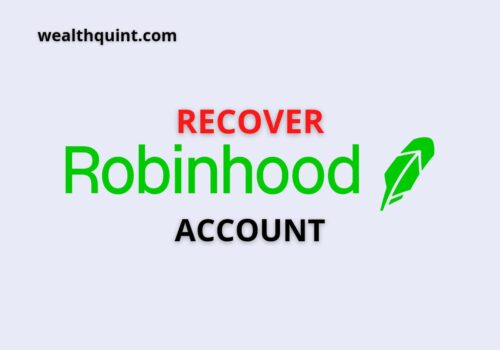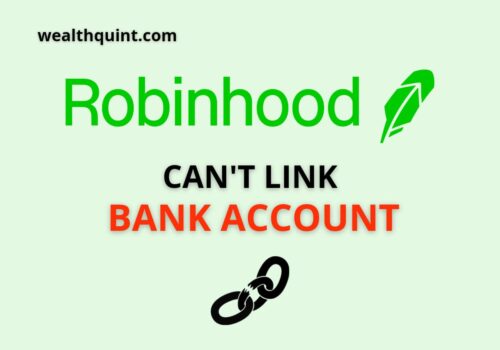Robinhood is a free stock trading app that’s taking the world by storm. It’s already worth more than $5 billion on paper, it recently closed another monster round of financing at a valuation of $6 billion+, and its user numbers are growing faster than ever.
But how can you actually make money with Robinhood? Well, unlike most stockbrokers, which make money by selling your orders to a high-priced market maker, Robinhood earns interest on the cash and securities in your account.
How To Make Money On Robinhood?
Robinhood offers several financial products that can be used to make money. Following are a few ways:
1. Through Dividends
It is likely that you will pay your dividends using some of the stocks and ETFs that you purchase on Robinhood. Dividends, generally, are paid on a quarterly basis and are by default, deposited to your cash balance in your account.
However, there’s an option to use the same dividends to buy more shares. Given that you have your fractional shares enabled, Robinhood allows you to use this dividend reinvestment feature.
With this reinvestment, you will be earning compound interest. So you can find and invest in dividend stocks offered by a company that guarantees to pay you dividends.
2. Asset Appreciation
All investors make money using the common philosophy of “buy low and sell high.” so, here, you buy a stock or an ETF available at a low rate and sell it later for a profit.
To make profits via asset appreciation, you need the market in your favor. So if the broad market is down, then it will affect all the investments across the board.
3. Crypto Investing
Robinhood also allows users to trade in cryptos to make money. Cryptos, however, allow you to make money by asset appreciation.
Given that the crypto market is highly volatile, it is likely that you’ll earn some profits. Although, it is equally likely that it may cause you losses too. So, investments should be made after thorough research.
4. Robinhood IPO Access
Robinhood allows its users, that is, everyday investors, to invest in the IPOs and earn profits. The users can check which IPOs are available and request the number of shares that they would like to purchase. Rest, it works similar to asset appreciation.
5. Interest On Savings
The cash management product of Robinhood allows the users to earn interest on their idle cash. The platform allows people to earn interest on their deposits in the account.
Moreover, it is a one-stop solution for users to pay bills, send checks, get paid, and earn interest. Robinhood partnered with the FDIC-insured banks to bring out these features.
How Much Can You Make With Robinhood?
Well, if you had bought $10,000 worth of Apple stock back when Robinhood started (Feb 2015), it would now be worth $14,360. That’s a return of 56% in about 25 months or so ($340 per month).
For comparison, the same amount invested into an ETF like SPY (which tracks the S&P 500) would be worth $14,345. Not too much in it there, but keep in mind that the cash you don’t invest with Robinhood will earn interest elsewhere.
To make more money on Robinhood, you need to get more cash into it. There are a few easy ways to do that:
– Keep the free money they give you in your account and just pay interest on it. How much? Well, Apple has a 5% dividend yield right now, which means the $10k investment from above would bring in an extra $500 per year.
– Transfer your cash into a bank that pays interest. The best option here is probably Ally Bank, as they currently yield 1.35% on their savings account and offer up to a $150 sign-up bonus. Their checking account also pays interest, but it requires you to deposit more than $15,000 to it.
– Transfer some of your cash into high yield savings account from a reputable bank like Barclays or Synchrony Bank. They both pay 1% interest, and they both offer up to a $200 sign-up bonus. If I remember correctly, the initial transfer doesn’t have any fee, but transferring back has one.
You can do this to get more cash into Robinhood and use the interest you’ll be earning on it, but there’s a catch: you can’t buy stocks using an external bank account because of the way Ally works with external banks. You’ll have to withdraw the funds from that external bank after transferring them into Ally.
What About Stocks, ETFs, Options Etc?
You can only invest with Robinhood by investing in individual stocks so there are no ETFs or options trading. You can buy partial shares of stock, but your account needs to have the cash available in it before you can place an order!
Keep in mind that Robinhood is strictly a mobile app so you’ll need an iOS or Android device to use it.
How Does Robinhood Make Money With $100?
By selling Gold subscriptions, Robinhood earns revenue. Robinhood runs a premium subscription called Robinhood Gold. It costs $6 per month, and it allows you to borrow up to double the money in your account (so $20,000 in this case) and sell stocks short (bet that the price goes down).
You can also trade on margin, which means you can buy stocks with money you don’t actually have in your account.
How Long Does It Take To Make Money On Robinhood?
When you make money with Robinhood, it happens almost instantly. When your stock goes up, the value shows up in your account immediately after the market closes (5 minutes before midnight UTC).
If you sell a stock for more than it costs, the cash will show up in your account within one business day. You can then use that cash to buy another stock right away.
If you hold a stock for less than 1 day, I believe it’s treated as a short-term gain and the tax rate is similar to your normal income tax bracket. If you hold it for more than 1 day, then it gets taxed at 0%.
What About Commissions On Robinhood?
Robinhood doesn’t charge you any commissions for buying or selling stocks. This might be the only way they make money because other brokerages charge ~$7 per trade (plus $20 in many cases if you’re not an active trader).
Robinhood Gold costs $6 per month, and it allows you to borrow up to double the money in your account (so $20,000 in this case) and sell stocks short (bet that the price goes down). You can also trade on margin, which means you can buy stocks with money you don’t actually have in your account.
How Long Does It Take For Money To Leave Robinhood?
If you sell all of your stocks, it will take about 5 business days for the money to go out of your account. The cash will sit in limbo during that time because Robinhood can’t send it outside their platform.
There’s no fee for this but if you sell enough shares to drive your account balance below $2,000 then Robinhood would charge a $10 account closure fee.
What’s The Catch With Robinhood?
The biggest drawback with Robinhood is that you can’t do ETFs or options trading. You can only buy individual stocks and you only have access to US markets (no international stocks).
Also, your account must be funded at all times for you to be able to trade. When your cash balance falls below $2,000, you’ll get hit with that $10 account closure fee.
How Do I Double My Money On Robinhood?
There are a few ways to double your money on Robinhood.
If you play the Robinhood Gold game and borrow additional money, you can sell a stock short and essentially double down on it if it goes lower.
You’ll have to pay interest on that loan from Robinhood though, so this isn’t an effective way to double your money unless you can borrow and sell quickly (before the price goes back up).
If you hold a stock for less than 1 day, it’s treated as a short-term gain and the tax rate is similar to your normal income tax bracket. If you hold it for more than 1 day, then it gets taxed at 0%.
When you short a stock or buy on margin, you can double your money if the price goes down by 50%. So for example, if you buy one share of Google for $1000 and it goes down to $500, you’ve doubled your money! Of course, there is a risk here so tread carefully.
Conclusion
Robinhood is an awesome way to get started with stock trading. Their $0 commission fees are awesome, they have a fantastic user interface, and it’s super easy to get started. Remember that you’ll need at least $2,000 to avoid the fee, though!



